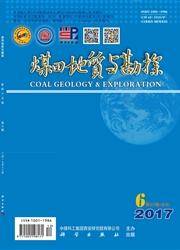

 中文摘要:
中文摘要:
利用土柱实验装置,以平顶山矿区地下水补给区内采集的新近系泥灰岩和乌江河河水作为岩样介质和入渗水样,开展模拟溶解性有机质迁移转化的室内土柱淋滤实验,分析了不同温度和渗透流速条件下溶解性有机质的迁移转化特征。结果表明:溶解性有机质在泥灰岩中主要是通过对流、弥散、吸附作用和生物降解作用等过程进行迁移转化;在一定温度范围内,温度升高时,泥灰岩对溶解性有机质的吸附作用随之减弱,生物降解作用则相应增强;渗透流速增大时,泥灰岩对溶解性有机质的吸附作用和生物降解作用均是相应减弱。
 英文摘要:
英文摘要:
By use of soil column experimental device, with Neogene marlite collected from groundwater recharge area of Pingdingshan mine area and water of Wujiang River as rock sample and water sample respectively, the indoor dynamic column experiments were carried out to reveal the migration and transformation rule of dissolved organic matter. The results showed that migration and transformation of DOM in the Neogene marlite mainly included the processes, such as convection,dispersion, adsorption and biodegradation. Within a certain temperature range, as the temperature increases, the adsorption effect weakens, however biodegradation is enhanced with temperature. When seepage velocity increases, the adsorption effect and biodegradation are correspondingly weakened.
 同期刊论文项目
同期刊论文项目
 同项目期刊论文
同项目期刊论文
 期刊信息
期刊信息
